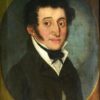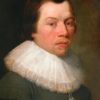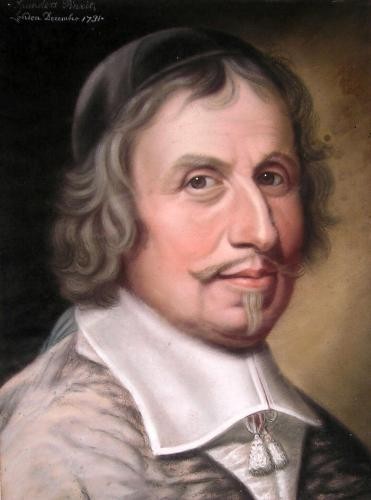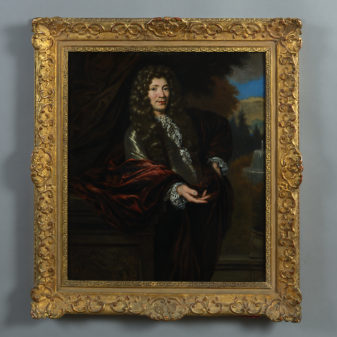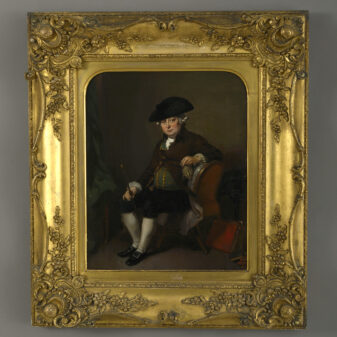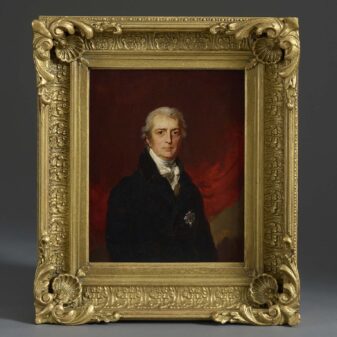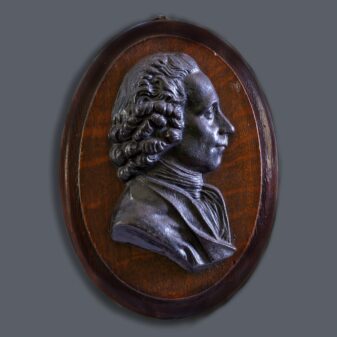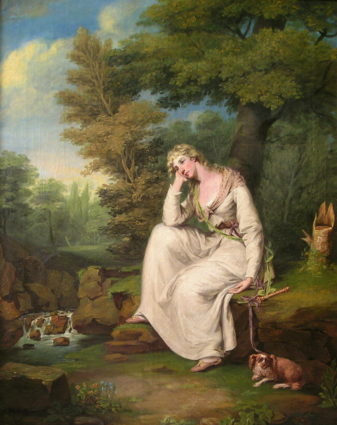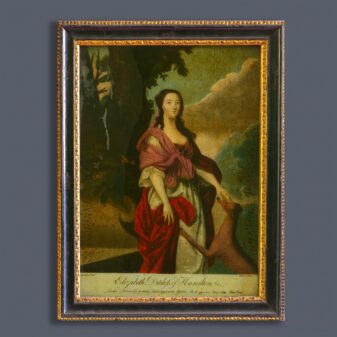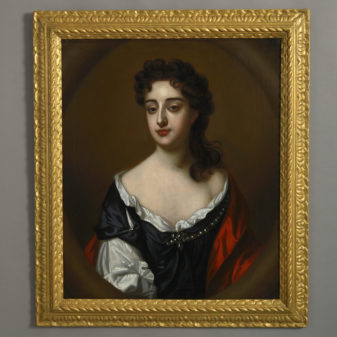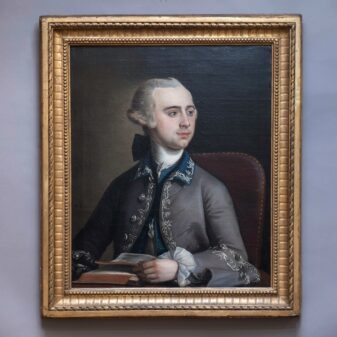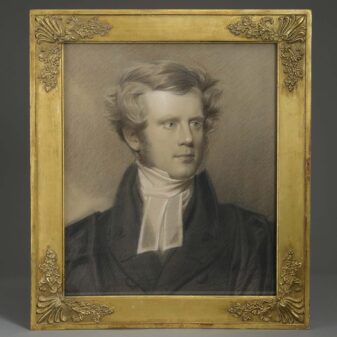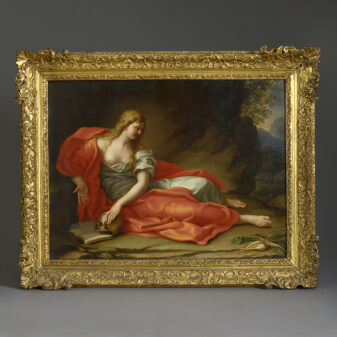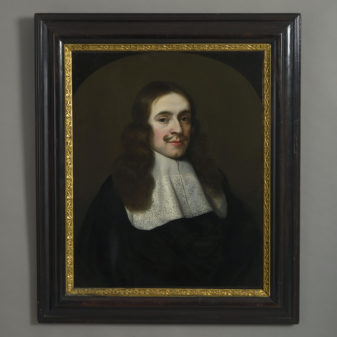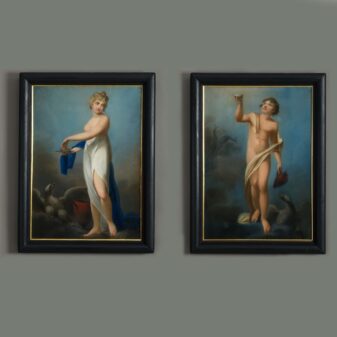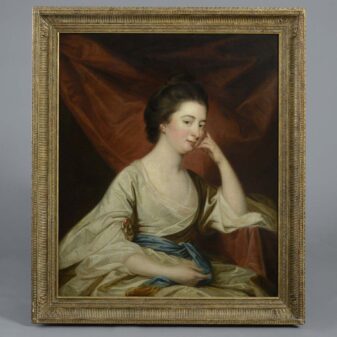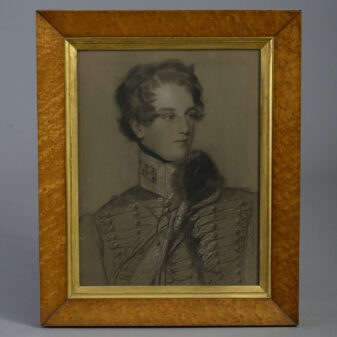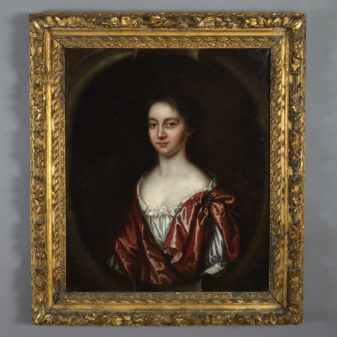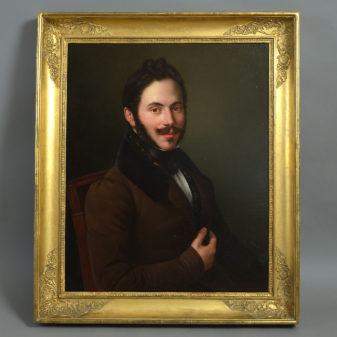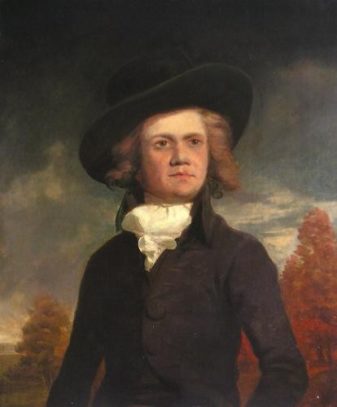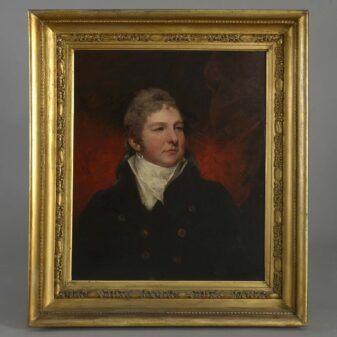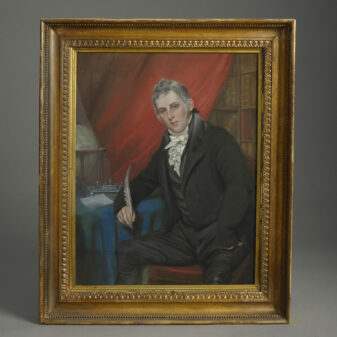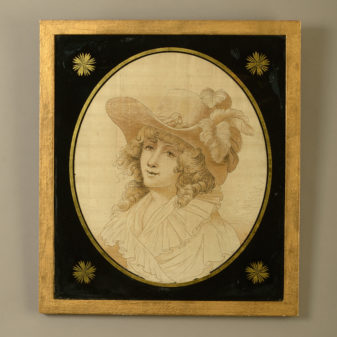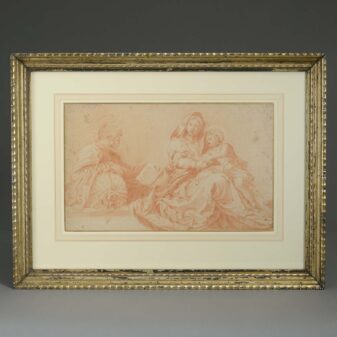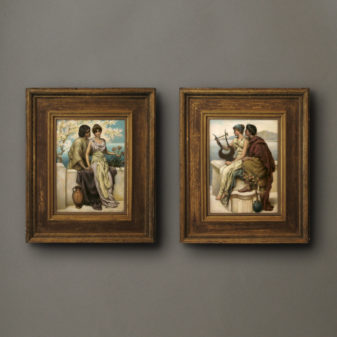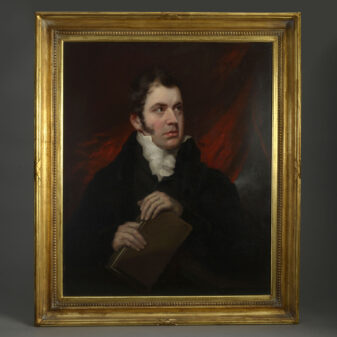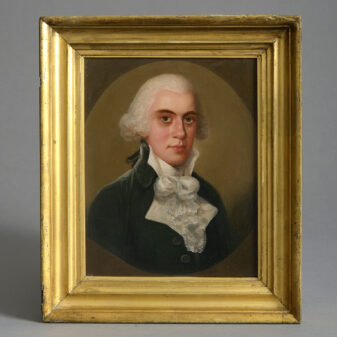John Saunders, Cardinal Antonio Barberini
£2,000
SOLD
Pastel on paper; 15 ¾ by 11 ¾ in; 40 x 30 cm; inscribed, signed and dated reverse; held in an 19th century gilded frame
Provenance: Private Collection, England
John Saunders was an itinerant portrait pastellist working in England who appears to have been prolific but little evidence of this is now apparent. Practicing in Bath in the first quarter of the eighteenth century by 1730 he settled in London, along Fleet Street. It was here that he no doubt had access to prints such as the Nanteuil engraving which he copied for this portrait of Cardinal Antonio Barberini. Robert Nanteuil (c.1623-1678) completed the portrait of Barberini in 1663 and various engraved copies of the picture were in circulation soon after. Saunders appears to have enjoyed a certain level of business by copying the portraits of well known individuals and a similar portrait of Rembrandt (1722) indicates that he sought out engravings to copy. This pastel of Barberini is extensively annotated on the reverse by the artist and reads ‘Cardinal Antoine Barberini of the Order of the Holy Ghost – Saunders Pinxit, London December 1731 after a print engraved by R. Nanteuil ad vivum et pinx = 1663’. His self portrait finished a year after this (1732) is in the National Portrait Gallery, London.
There is evidence to suggest that Saunders had some possible Jacobite sympathies and that he might have also travelled to America. Certainly no dated works exist after the 1750s and therefore we can assume he died soon after this time.
Born in Rome to Carlo Barberini and Costanza Magalotti, Antonio was elevated to cardinal by his uncle Pope Urban VIII in 1627, although publication was postponed until February, 1628. In 1630 he was made Legate in Urbino, and later in Avignon (1633). He assumed the post of Camerlengo of the Holy Roman Church in 1638. He was one of the leaders of the papal army during the Wars of Castro (1642-1644).
Contemporaries widely commented about his very dissolute conduct during the pontificate of his uncle. According to Gregorio Leti, ‘The great inclination he has had to women hath been no small blemish to his reputation’. Apparently he was involved in several affairs with lovers of both sexes. He became particularly intimate with the castrato singer Marc’Antonio Pasqualini in the early 1640s and contemporary testimony leaves little doubt that the ‘veritable passion’ the cardinal felt extended to more than Pasqualini’s beautiful voice.
Soon after the ascension of Pope Innocent X Antonio was accused of financial abuses during the war of Castro and went into exile to Paris with his brothers Francesco and Taddeo, under the protection of Cardinal Mazarin. He reconciled with the Pope in 1653 and returned to Rome whereupon he changed from his dissolute lifestyle and devoted himself unconditionally to religion; he was ordained a priest and became strongly involved in the campaign against Jansenism; he was promoted to the suburbicarian see of Frascati (1655), and then of Palestrina (1661); he became Vice-Dean of the Sacred College of Cardinals in March 1671 – the dean at that time was his older brother Francesco. In 1653 Louis XIV of France nominated him bishop of Poitiers but this nomination had not been ratified by the Holy See and four years later the King transferred him to the see of Reims, an act confirmed by the Pope in 1667. For many years he served as Cardinal-Protector and Grand Almoner of the Kingdom of France and also a great patron of arts. He died in Nemi two days before his 64th birthday.

